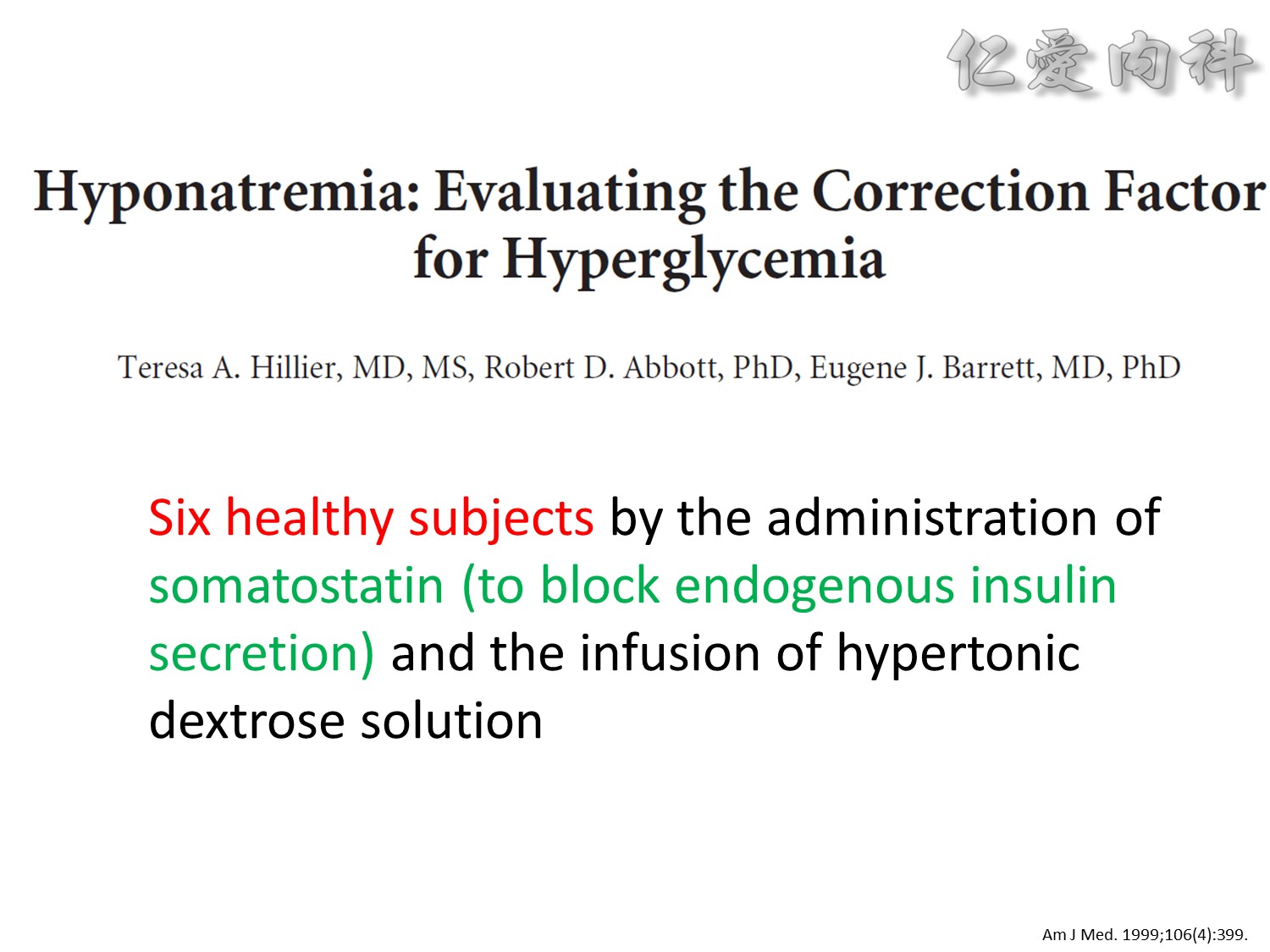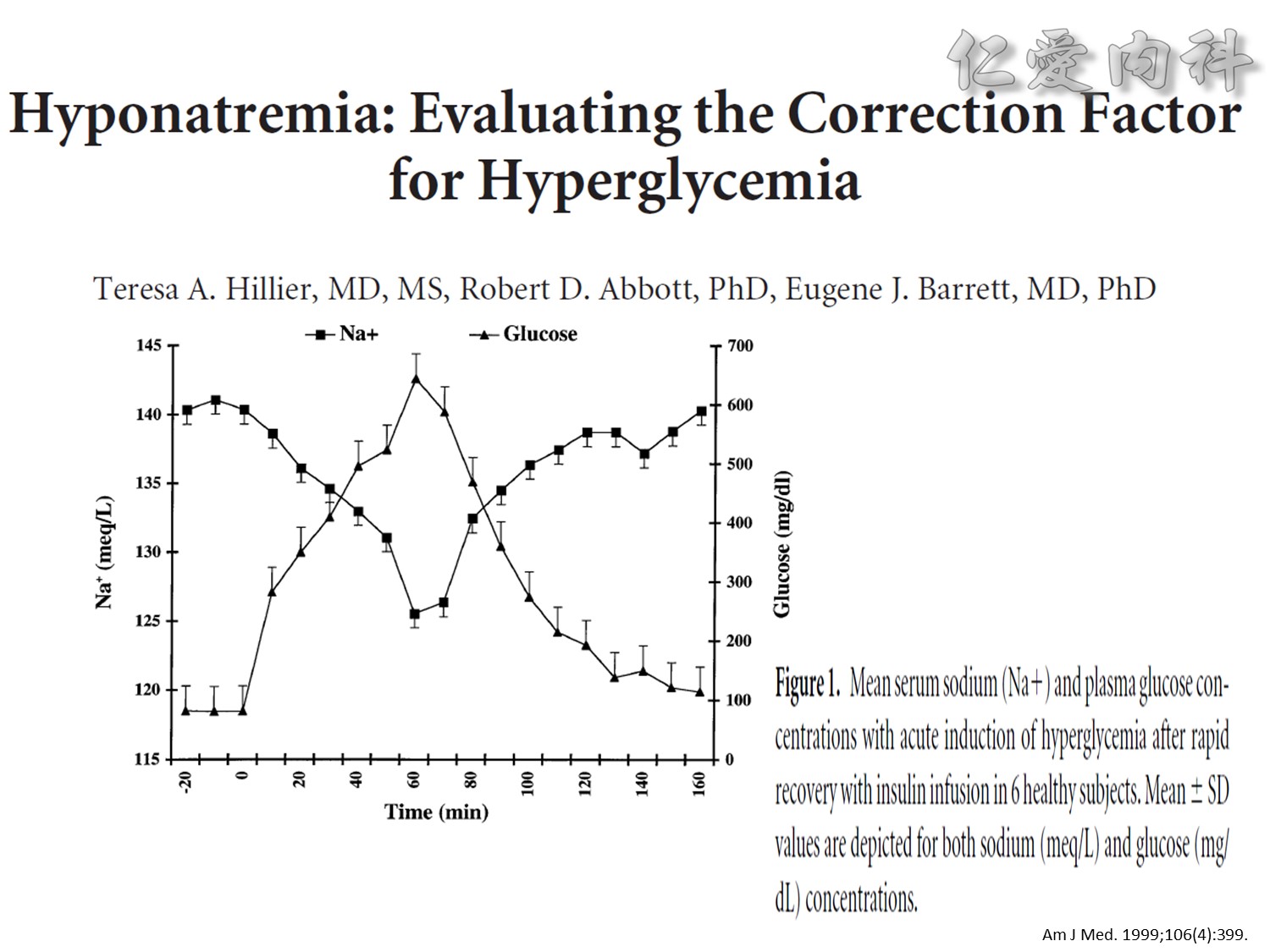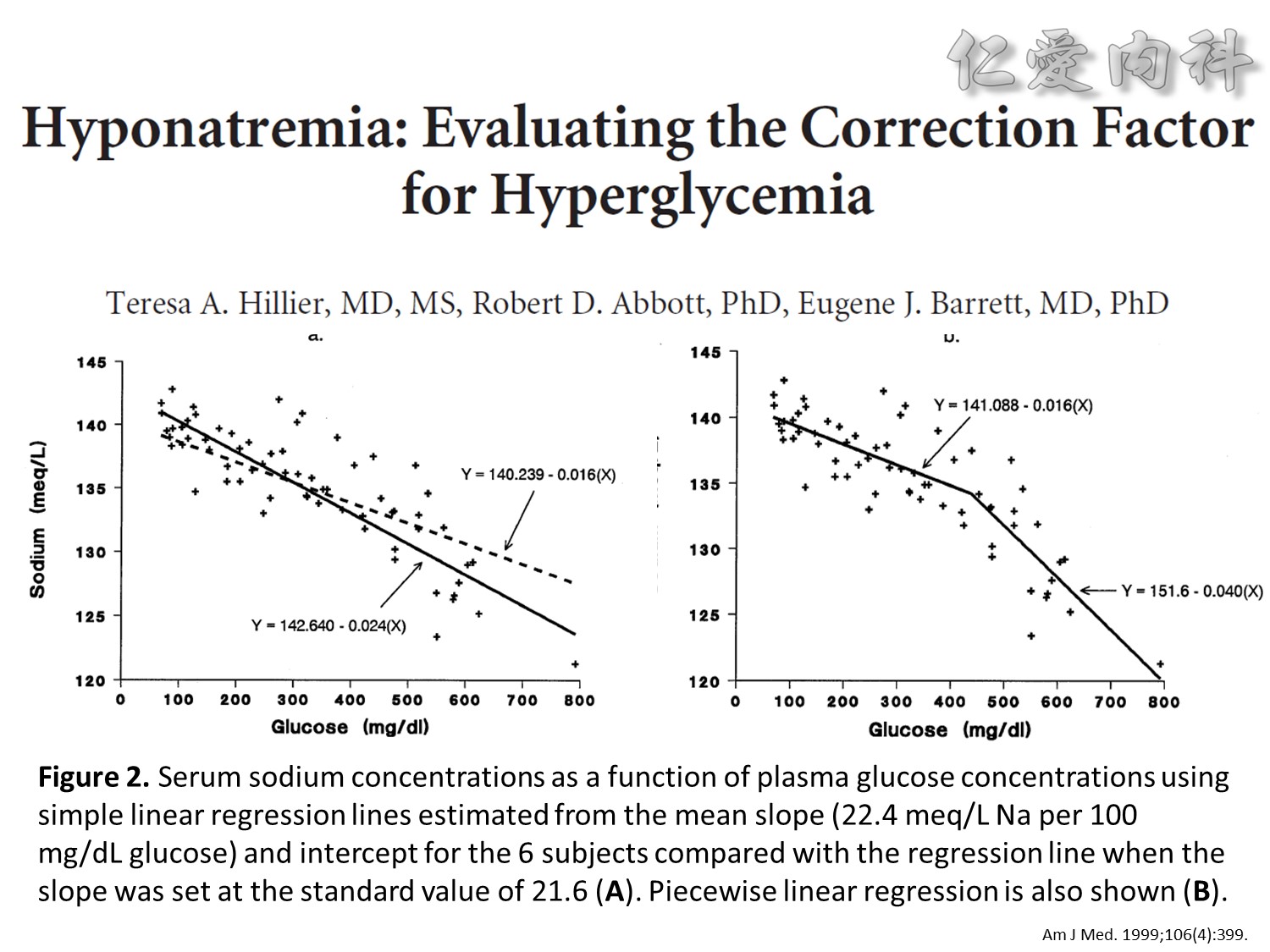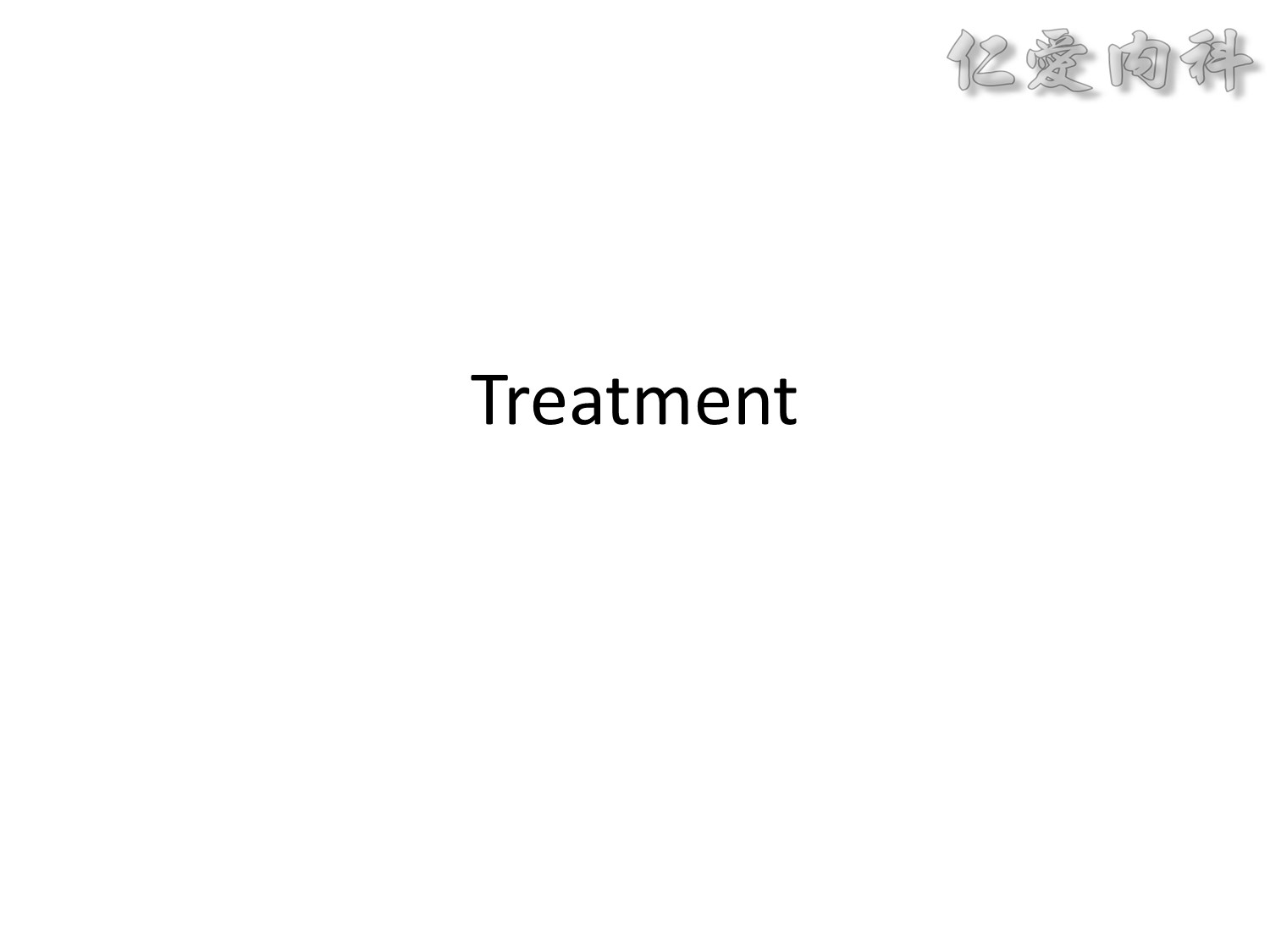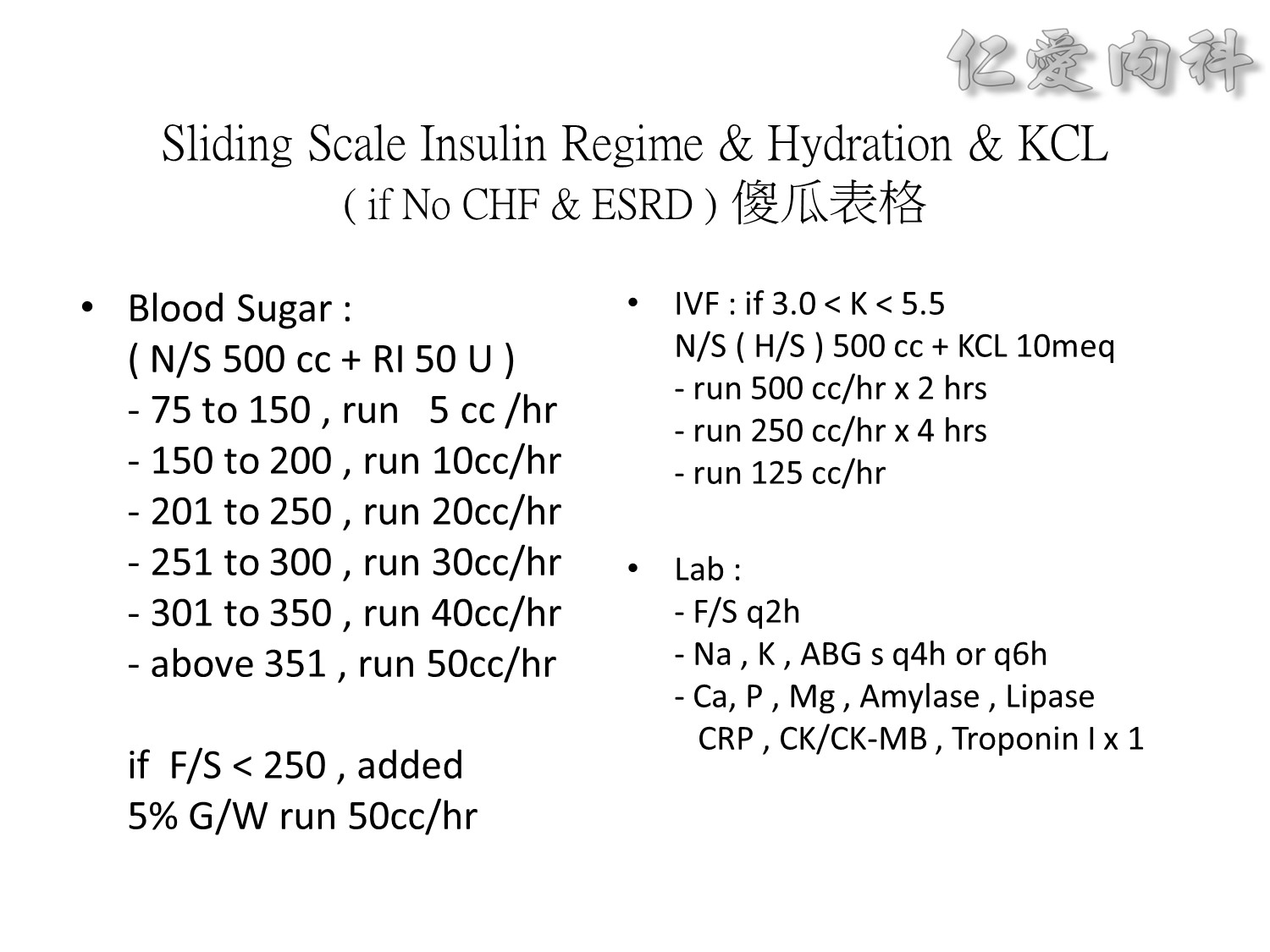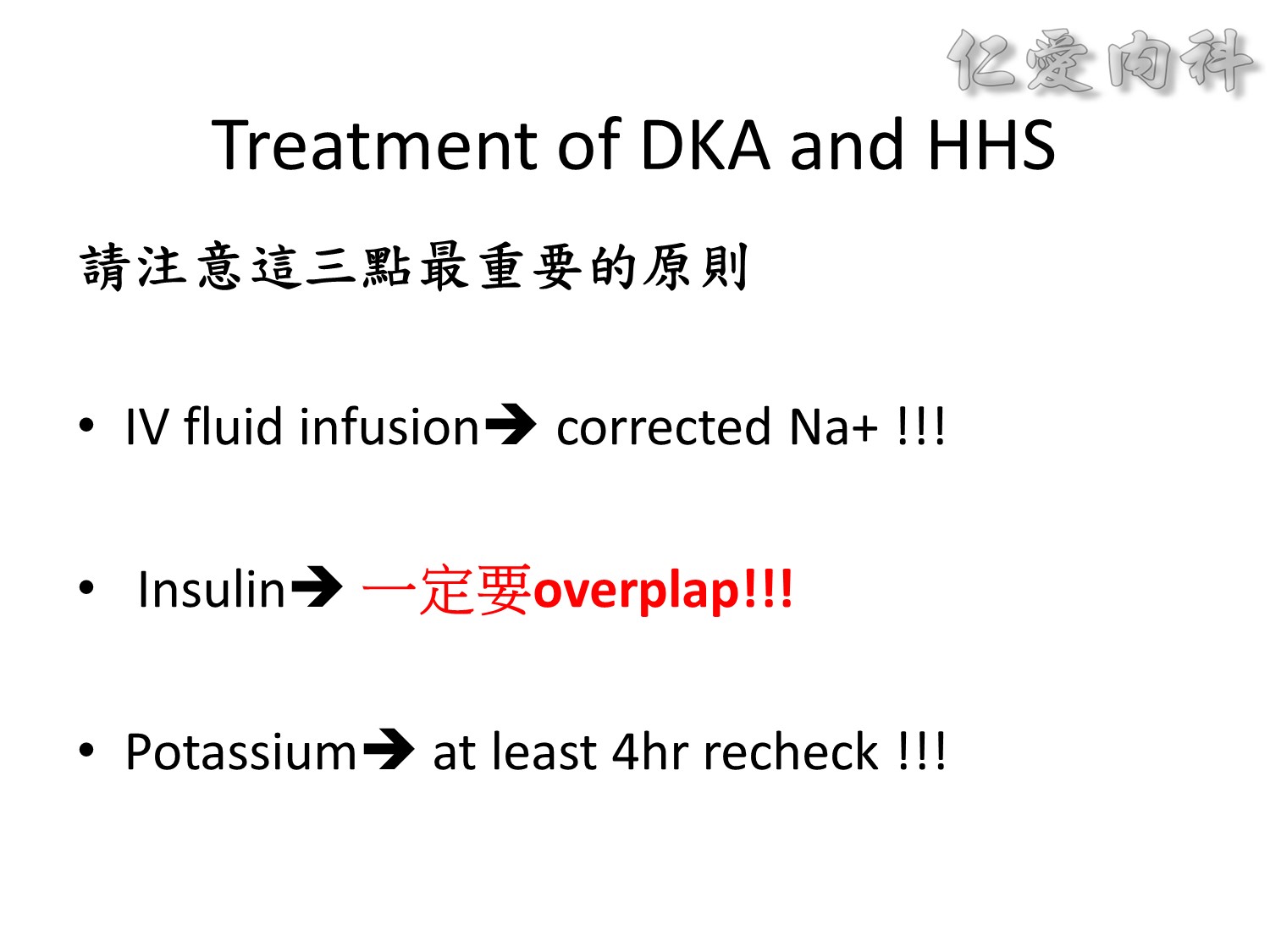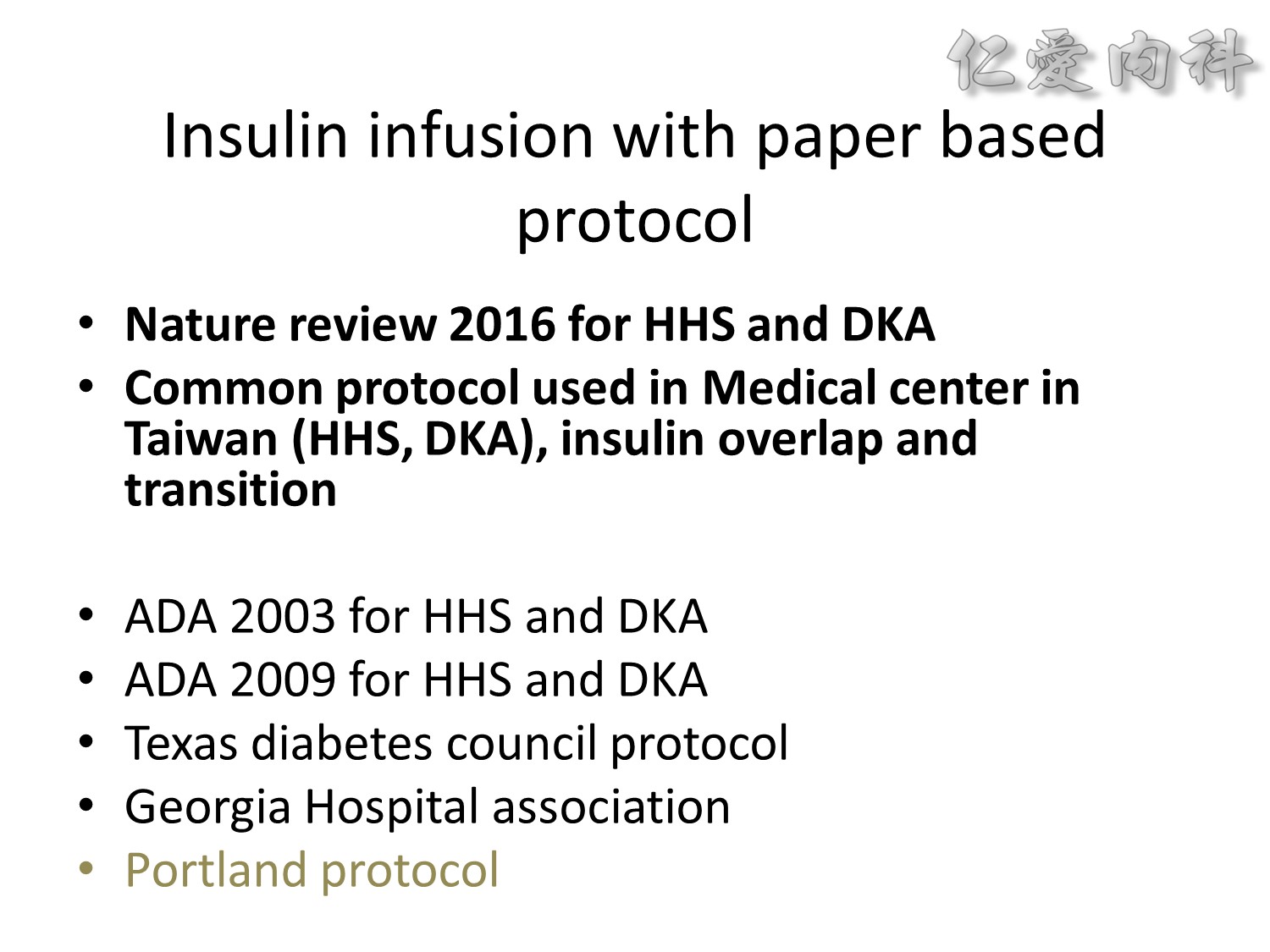
Six healthy subjects by the administration of somatostatin (to block endogenous insulin secretion) and the infusion of hypertonic dextrose solution, the relationship between the fall in sodium concentration and the increase in glucose concentration was not linear and the reduction in sodium was greater than had been previously reported.
PURPOSE: There are no controlled experimental data that assess the accuracy of the commonly used correction factor of a 1.6 meq/L decrease in serum sodium concentration for every 100 mg/dL increase in plasma glucose concentration. The purpose of this study was to evaluate experimentally the hyponatremic response to acute hyperglycemia.
SUBJECTS AND METHODS: Somatostatin was infused to block endogenous insulin secretion in 6 healthy subjects.Plasma glucose concentrations were increased to .600 mg/dL within 1 hour by infusing 20% dextrose. The glucose infusion was then stopped and insulin given until the plasma glucose concentration decreased to 140 mg/dL. Plasma glucose and serum sodium concentrations were measured every 10 minutes.
RESULTS: Overall, the mean decrease in serum sodium concentration averaged 2.4 meq/L for every 100 mg/dL increase in glucose concentration. This value is significantly greater than the commonly used correction factor of 1.6 (P 5 0.02). Moreover,the association between sodium and glucose concentrations was nonlinear. This was most apparent for glucose concentrations.400 mg/dL. Up to 400 mg/dL, the standard correction of 1.6 worked well, but if the glucose concentration was.400 mg/dL, a correction factor of 4.0 was better.
CONCLUSION: These data indicate that the physiologic decrease in sodium concentration is considerably greater than the standard correction factor of 1.6 (meq/L Na per 100 mg/dL glucose), especially when the glucose concentration is .400mg/dL. Additionally, a correction factor of a 2.4 meq/L decrease in sodium concentration per 100 mg/dL increase in glucose concentration is a better overall estimate of this association than the usual correction factor of 1.6. Am J Med. 1999;106:399–403. q1999 by Excerpta Medica, Inc.

